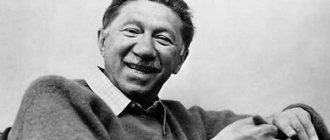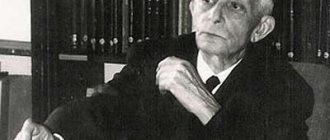Transpersonal psychology is a scientific movement in modern practices of psychology, which is based and progresses on the foundations of Western psychology, while introducing into practice the accumulated knowledge of spiritual and religious plans, adapting them to psychotherapeutic practice.
She focuses her attention on the deep areas of the human psyche, processes that develop personality and the dynamics of consciousness, philosophical rethinking, scientifically based ideas, experiments and world psychological technologies.
Transpersonal psychology in its teaching implies finding in a person’s memory the processes of his maturation in the womb and subsequent birth.
Transpersonal psychology explores the maximum possible abilities and capabilities of each individual person, which means that research is carried out in the transpersonal and superpersonal sphere of consciousness. The theme of superman and super being is touched upon here. The nature of the occurrence of emotional experiences, their form and cause-and-effect relationships are also studied. On the basis of what experiences and emotions arise, where they come from and what they can transform into, you can also think about where these emotions can be directed in order to extract maximum benefit from it, primarily for the person himself.
The object of study of transpersonal psychology is a person with a creative nature, looking for ways of self-improvement and self-knowledge, with the desire for all possible realizations of their capabilities, at the same time from an adequate and balanced side. First, you need to discover these capabilities in yourself and bring them to a minimum level.
In transpersonal psychology, the universe is a harmonious and holistic environment in which a person is aware of his capabilities and understands the connection not only with the people around him, but also with the Universe as a whole.
Approaches to self-knowledge and self-development
- Psychological therapy based on body orientation. Concentration of attention on objects and contacts with them.
- Art therapy. Studying new works, getting acquainted with the creativity of different eras and peoples.
- Breathing practices and techniques. Holotropic breathing, rebirthing.
- Meditation. Achieving peace, restoring harmony with oneself.
- Yoga class. Harmony with the body.
- Analysis and elaboration of dreams. Memorizing your dreams, trying to analyze them and understand why you dream something and why.
- Activating the imagination.
Approaches and techniques in transpersonal psychology emphasize natural, direct and frank experience with the manifestation and expression of sincere emotions that help a person open up and discover emotional problems, make discoveries and gain insight. In the same way, interpersonal problems in relationships can be solved by attracting the unconscious forces of a person.
Obscurantism and mortal danger
Transpersonal psychology is taught in some universities (Institute of Transpersonal Psychology, Saybrook High School, Russian Institute of Psychotherapy and Clinical Psychology, California Institute of Integral Studies, John F. Kennedy University, etc.). Conferences both in the USA and in other countries, books and textbooks, and scientific journals are dedicated to it.
However, this direction is not recognized as scientific by the majority of psychological associations (except the British Psychological Society) and universities. The main reason is the lack of a convincing research base proving the effectiveness of transpersonal psychology methods. The professional community recommends cognitive behavioral therapy for people with psychological problems, the mechanisms of which have been well studied.
Subject of study
- Human consciousness, ways of expanding it and studying the resulting states.
- Parapsychology. The study of phenomena that cannot be explained by the activities of the organs of touch and senses.
- The ability to narrow consciousness to a specific specific organ. Focusing on a specific organ to study or diagnose it, followed by treatment.
- Spiritual practices and religions and their influence on the psyche, regarding psychiatry and psychology.
- The influence and effect of psychedelic drugs on human consciousness.
- Breathing exercises and practices and their effect on mental state. This includes holotropic breathing and rebirthing.
- Meditations. The influence of meditation on the psyche.
- Yoga practices.
- Spiritual growth and its psychological component.
Transpersonal psychology tries to capture the full picture of human existence, while other sciences give preference to a limited part of realistic processes.
Transpersonal psychology studies a wide range of phenomena in human experience:
- Changes in the state of consciousness, this can also include changes using regressive hypnosis.
- Diversity of states of consciousness.
- Crisis of the spiritual sphere.
- Near-death experiences and states.
- Intuition and the possibilities of its development.
- Creative abilities – their manifestations and development.
- Higher spheres of consciousness and their states. Achievement and analysis.
- Personal resources.
- Phenomena of a parapsychological nature.
Transpersonal psychology has several representatives of scientists with different approaches and concepts.
The first beginnings of transpersonal psychology can be found in the works of Carl Jung. According to his theory, the study of the deep spheres of the psyche is possible through personal cognition, which transforms into knowledge and passes into an unconscious state into the subconscious.
William James is considered to be the founder of transpersonal psychology.
- Abraham Maslow. The founder of the doctrine of self-actualization of personality. The teaching is built on peak experiences, such as climax (orgasm) in love relationships and sex, sudden insights and the birth of new ideas, ecstasy, expansion of the boundaries of consciousness, loss of one’s “I”. Abraham Maslow's research is the basis for transpersonal psychology.
- Stanislav Grof. Researcher of psychedelic drugs and their effects on the psyche. The effect of the drug is based on a change in consciousness and perception of the environment, as well as an impact on the emotional sphere. The approach is based on psychotherapeutic work with self-knowledge, through a forced change in consciousness under the influence of psychotropic drugs. Founder of the holotropic breathing technique. The holotropic breathing technique is based on removing blockages that hold back internal resources and energy flows, which can be used to activate suppressed consciousness and transform it into flows of positive energy and experiences aimed at learning something. In the theory of Stanislav Grof, two types of consciousness are distinguished: consciousness focused on the reality of touch and consciousness focused on internal reality, the one that is not tangible. Moreover, both states are real and capable of interacting with each other. The main achievement of Stanislav Grof in transpersonal psychology is the assumption that almost all illnesses of a psychological nature, only hidden under the guise of an illness, are not actually such. All mental illnesses are basically a crisis state of the body in terms of personal or spiritual growth. No one is immune from such cases, and anyone can be at risk.
- Vladimir Maikov. Scientific figure adapting and developing transpersonal psychology in Russia using the methods and experiences of Western colleagues. Introduction of transpersonal psychology and its methods through trainings, seminars and webinars. One of the techniques: holotropic breathing as a solution to life’s difficulties. Expanding consciousness and going beyond one’s “I” with the help of breathing practices and exercises.
Transpersonal psychology makes it possible to understand that the human psyche is richer and more intricate than it initially appears. The human subconscious hides secrets that normally cannot be revealed. From the subconscious you can extract amazing memories that the conscious mind may not even be aware of.
New frontiers of human nature
Increased public interest in Eastern spiritual practices and the availability of psychedelic substances encouraged scientists in the 1960s to study altered states of consciousness.
Psychoanalysis, behaviorism, and humanistic psychology could not fully describe the experiences of people who took LSD and practiced yoga and meditation.
Therefore, transpersonal psychology appeared, whose adherents focused on the spiritual world of man and transformation techniques that can help one feel one’s integrity and unity with the cosmos.
This direction was based on the ideas of psychologist William James and psychoanalysts Carl Gustav Jung and Otto Rank. Without James, the study of spiritual experience would not have begun at all: it was he who stood at the origins of psychological studies of religiosity. The concept of archetypes was borrowed from Jung, and from Rank the concept of the first mental trauma that a person receives at birth.
Abraham Maslow, the author of the hierarchy of human needs model (Maslow's pyramid), was one of the pioneers of the transpersonal approach. He was the first to talk about the individual’s desire to know his capabilities and reach their limits, and he considered transpersonal psychology the “fourth force” of American psychology, which will explore the “further frontiers of human nature.”
The point of such therapy is to use various techniques to get to the deep layers of the psyche, bypassing the rationalizing mind. It is believed that this is where all the answers to the questions tormenting the patient are stored, and if he finds them, he will be healed.
Research methods
Transpersonal psychology uses the following techniques:
- Psychophysiological study.
- Psychodiagnostic techniques.
- Techniques using psychedelic drugs.
- Breathing practices and techniques.
- Analysis of the functioning of the senses and touch.
- Imagination and visualization.
Techniques for initiating changes in consciousness:
- Initial focusing of attention on a certain subject, sudden switching of attention to another subject.
- Stimulation through deprivation of the opportunity to satisfy any need. In this option, there is a refusal to satisfy thirst and a refusal of water during physical activity.
- Increased motor activity.
- Exposure to temperature changes.
- Impact using acoustic systems.
- Restrictions or deprivation of movement.
- Privacy. Restriction in a closed, quiet and dark room.
- Immersion of a person in conditions in which it is impossible to sleep.
- Holotropic breathing.
- Rebirthing. The founder of the methodology and technology is Leonardo Orr.
- Theta healing.
Religious experience: at the intersection of hypnosis and physiology
The new science is universal and covers all the features of civilization that take a person beyond the cranium. The oldest way of understanding life and death, the universe and oneself is religion. Classical confessions Books laid the basis with the help of which everything else is studied today. Experts are trying to understand how prayer and other practices change the consciousness of fanatics. You have probably seen people in houses of worship in ecstasy, convulsing as if they were ready to explode. This is a favorite dish of psychologists.
For example, exorcism, which we have already talked about. From a psychological point of view, both participants in the action are experiencing at this moment the experience of communicating with the extraterrestrial. Seen from the outside, it seems that the priest is really fighting the demon inside the possessed person. However, scientists explain this by a hypnotic effect. As a result, we get a hot mixture: one of the participants in the communication is not himself, and the other is a fanatic who believes in his abilities. The more interesting question is what people are experiencing at this moment. Most often, participants in the act experience a feeling of euphoria, panic, see hallucinations, and so on. Is hypnosis really capable of achieving this? Not certainly in that way. Rapid breathing has a big impact here. A person absorbs more air, which is why he gets what is popularly called “oxygen intoxication.” This is reminiscent of one of the methods of transpersonal therapy by Stanislav Grof - holotropic breathing.
Shamans who experience mystical experiences during their dances and spells deserve special attention. Often their detachment from the world at these moments is explained by their special sensitivity to the unconscious. In a trance state, connection with reality is lost, and the body acts according to a script. Some people need substances for these things, while others, thanks to their psychological characteristics, are able to go beyond the bounds of reason. Often people come to such practices during a spiritual crisis. For example, if you have lost interest in everything everyday, then you look for some sacred meaning in everything. During such periods of a person’s life, a spiritual aggravation begins.
Holotropic Breathwork Technique
Holotropic therapy is aimed at awakening the unconscious part of the psyche through breathing techniques, special physical exercises and music. Holotropic breathing is aimed at removing blockages, replenishing vitality and energy that has been suppressed or muffled by consciousness.
Holotropic breathing technique: deep breaths with high intensity, speed and frequency of exhalations. As a result, hyperventilation of the lungs occurs.
Breathing activates energy, spontaneous uncontrolled body movements open the way to transformation and healing. The newly acquired and discovered energy will go in the right direction and as a result, the integrity of one’s “I” will be achieved.
The result of holotropic breathing is relaxation of the body, finding a solution to the current situation.
Holotropic Breathwork can bring about revelations and awaken sincerity that may not be possible or accessible through intellectual approach and problem solving.
The difference between transpersonal psychology and other sciences
Modern trends in psychology claim to be purely scientific and objective; their research is confirmed by facts and through research experiments. But traditional science about man somewhat ignores individual phenomenological manifestations of personality - transpersonal experience.
The transpersonal approach in psychology is more focused on specific areas of knowledge about a person:
- on a special understanding of the psyche, which is “commensurate with the entire universe (everything that exists)” and should not be limited to personal experience;
- on phenomena that inspire creativity - their nature, forms, cause and effect; on the study of human consciousness in combination with the creative mind of the Universe, when the individual is considered in a variety of contexts (interpersonal, intercultural, environmental, cosmic);
- on the integrity of mind and physicality, which inherently exist from each other and individually do not determine the whole (human personality), but in combination allow one to live in harmony with oneself;
- on the breadth of coverage and adaptability, when even diametric areas of knowledge (religion and physics, for example) fall into the sphere of interests of TP.
It is possible to clearly formulate what TP is not: it is called rather parascience, it is not narrowed down to a scientific discipline, almost all scientific societies criticize the weakness of the scientific foundations of the approach and the effectiveness of the methods used in it. Although the popularity of TP does not decrease because of this and is even growing!
By revising the established traditions of the scientific approach, TP manages to combine psychophysics and psychophysiology, which are incompatible from a scientific point of view.
Rebirthing technique
Rebirthing helps to cope with negative emotions and throw out negative energy from oneself by working through birth traumas during the birth process. Rebirthing consists of five stages:
- Organization of breathing according to a certain cyclicity. Pauseless alternation of inhalations and exhalations.
- Relaxation of muscles, immersion in a relaxed state of the human psyche.
- Attentiveness, remembering everything that happens down to the smallest detail. Perceiving the environment with consistent accuracy.
- Transformation of perception and mood. Eliminating negative emotions and acquiring positive ones.
- Trust in everything that happens during the rebirthing technique.
ThetaHealing
The basis of thetahealing is concentration and work on the conditioned wave to achieve transformation of brain activity.
Constant training and meditation come to the rescue, teaching the human condition to feel, first of all, one’s energy field.
Theta-healing technique: a person visualizes a pulsating clot of light and energy in his chest, then this clot turns into a stream and strives to rise above his head. After a set time, the flow must be returned back and grouped into a clot in its original position. The technique is repeated until the connection with thought processes is lost - this action leads to the theta state. The theta state is characterized by concentrated work on a specific wave.
The result is calm and tranquility from the actions taken, along with this, concentration of attention arises.
Education
Anyone can gain knowledge on transpersonal psychology at esoteric seminars, or undergo training at a specialized institute. It is preferable to study at an institute, since there is more information in theoretical and practical terms than a seminar can provide.
The main requirement in teaching transpersonal psychology is a true and sincere desire to gain knowledge and learn to use it correctly, which is holistic in nature and is not activated by a superficial or instant desire to obtain a certificate or diploma, but is based on the direct motivation of studying oneself and the world, knowledge of theoretical foundations with desire to practice transpersonal psychology.
Many call transpersonal psychology not a science, but a half-science, and openly criticize the weaknesses of non-scientific foundations, approaches to the study of the human psyche and psychology in general, as well as the dubiousness of the results obtained and the use of methods for obtaining them. But, despite all the statements, transpersonal psychology is developing and attracting more and more supporters and like-minded people.
The use of transpersonal psychology helps to view a person from all aspects of his life: behavior, reactions, emotions and feelings, which in turn provides an opportunity for development and self-improvement, and the discovery of something new in oneself.
Transpersonal psychology reveals the resource of human potential, its creative potential and ability to gain insight.
Advantages and disadvantages
Positive sides:
- availability;
- opportunity for self-study;
- expansion of consciousness;
- personal development;
- variety of methods.
You can study the methods of the trans approach on your own or in special consciousness growth groups. Thanks to the techniques of self-research and self-medication, you can get rid of many somatic diseases, gain confidence and inner harmony.
The main disadvantage of discipline is prejudice. It is not recognized by the scientific community as a science, which means it has no official status. This gives scope for action to charlatans and lovers of quick money. Having declared himself as a specialist in the paranormal sciences, a person with the ability to lead into a trance can instill false experiences in listeners and pass them off as a real reaction of the subconscious.
Participation in such sessions harms the psyche, forms false memories, and can provoke depression and apathy.











